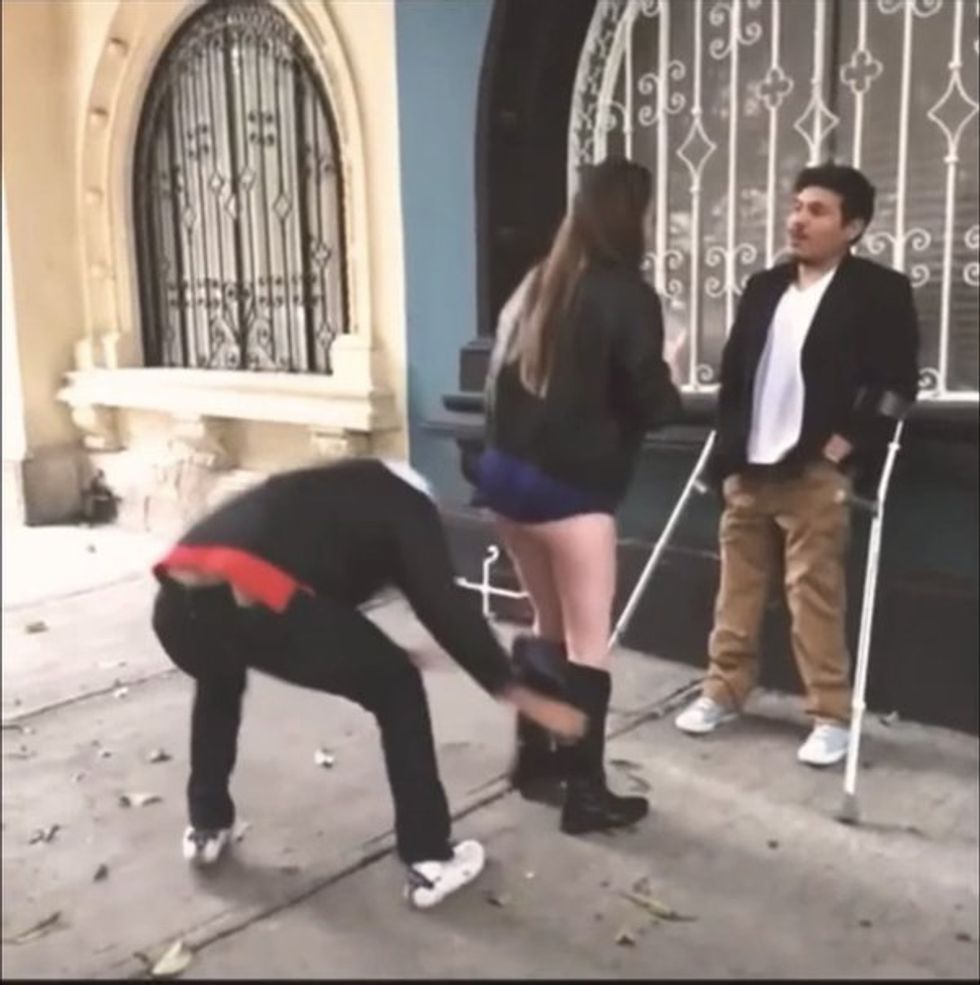Problem-based learning was developed in the mid-twentieth century when America was at its peak in creating new ways of learning.
Problem-based learning first appeared in medical schools, which were looking for a way to transfer theoretical knowledge to practice. Moreover, this approach teaches problem-solving when knowledge is lacking, which is especially relevant in the medical environment.
What Is Problem-Based Learning?
Problem-based learning is based on the process of finding a solution to a specifically formulated problem. The problems are so composed that the trainees inevitably refer to the theoretical material that the program requires them to learn. Thus, instructors no longer provide information and knowledge, which students must then somehow learn to apply.
Instructors set the problem and act as an assistant who moderates the discussion of the issue in the classroom and prompt. The students learn the required literature on their own in between sessions where they are already engaged in problem-solving.
Problem-oriented learning is often designed for several sessions, at least three. During the first one, teachers introduce the essence of the problem. They discuss how to make it more concrete and break it down into smaller subtasks. Most importantly, they discuss what knowledge and skills are available to solve it. During the second session, they discuss the material they've read and possible solutions. In the third, listeners present how they solved the problem in the chosen way or tell about the path.
Types of Problem-Based Learning (PBL)
There are the following types of problem-based learning:
- Contextual. PBL uses real everyday project problems. Hence the acquiring material is more relevant and will be easier to apply to similar projects.
- Constructive. PBL is an employee-centered approach in which employees study the issue and find solutions while the project manager serves as a guide on the side. Trainees should learn to solve a problem not in the classroom but in the place where it occurs - in a company, a factory, or a hospital.
- Collaborative. PBL stimulates the team to co-construct knowledge and share ideas. The problem and solution should be expressed in actions such as creating a new textbook format.
- Self-directed. PBL promotes self-directed learning skills among employees. Examples are planning, reflection, evaluation of understanding, and managing information and resources.
Collaborative PBL is the most popular because more companies realize the importance of cohesive teams.
Benefits of Problem-Based Learning
Even though creating problem-based learning can be difficult for methodologists and teachers, the result is often worth it. Well-built problem-based training will help prepare qualified professionals who are not afraid to take new steps. Problem-based learning has several significant advantages:
- Expanded problem-solving skills. Problem-based learning focuses on a big and open-ended question, challenge, or problem for the team to research and solve.
- Knowledge retention and recall. Problem-based learning is inquiry-based, stimulates intrinsic interest, and generates questions. It helps the team seek answers and apply this experience in further projects.
- Developing communication skills. Students need to cooperate to solve the problem. As a result, they improve or acquire new communication skills.
- Increasing critical thinking skills. Problem-based learning requires teams to present their problems, research processes, methods, and results.
- Improving teamwork skills. Problem-based learning encourages employees to work as a team to solve complex issues and take full responsibility for how their team functions.
Students don't think about how and where to apply the new knowledge when learning is problem-based. They don't ask, "why should I do it?". This is because the problem is already requested. Then the information is sought purposefully.
Steps to a Problem-Based Learning Approach
There are 7 steps in a problem-based learning approach:
- Explore the issue. The teacher presents students with a problem. Students discuss it and identify key points, or alternatively, you can learn the issues by creating feedback forms.
- State what is known. What do we know about the problem? What don't we know? This includes both existing knowledge and the abilities of group members. Students should roughly determine what each will contribute to solving the problem. Use student discounts to save money when it's time to put your books away and have some fun.
- Define the issues. The definition of the problem should be based both on the text of the problem itself and on the analysis of what is known and what is unknown. The output should be a formulated problem, approved by group members and the teacher. The formulation itself can be revised and edited as new information is acquired in problem-solving.
- Research the knowledge. Students need to find resources and information that will help create a compelling argument. It is necessary to gather information and learn something new to solve the problem.
- List possible actions and solutions to the problem, and accept all points of view.
- Choose the most appropriate solution. This stage presents a way of solving the problem, its justification, and confirmation with proper documentation in front of the group and experts. The presentation should include a problem statement, questions, collected materials, analysis of the materials, and confirmation of the solution's effectiveness based on the received material.
- Review team performance. The reflection on the path begins. It helps to consolidate the experience. Students discuss what difficulties the students encountered, what knowledge and skills came in handy most of all, and what is the next track for development.
The process of problem-based learning plays a significant role. Writing service states it should be structured in such a way that students end up with a comprehensive understanding of the subject matter they are learning.
Three Examples of Problem-Based Learning in Action
There are many examples of PBL learning. The most obvious are:
- Training/onboarding. It implies dealing with hypothetical situations to create a more collaborative environment and prepare the candidate for the actual project.
- Work-related tasks. It implies any tasks you may encounter while working in a team.
- Company-level strategy. It implies finding improvement insights, dealing with annual budgeting, risk determining, and so on.
A peculiarity of these 3 examples of problem-based learning is training in small groups. Usually, the group consists of no more than 10-15 employees, so it is easier to organize the discussion of the problem and develop joint solutions.
Conclusion
The choice of approach for designing an educational experience should first and foremost be based on the goals and objectives of the course, its program, the audience, and the context. PBL works well for practice-oriented programs, but it can be combined with other approaches, such as experiential learning.





 Going to the cinema alone is good for your mental health, says science
Going to the cinema alone is good for your mental health, says science












 women in street dancing
Photo by
women in street dancing
Photo by  man and woman standing in front of louver door
Photo by
man and woman standing in front of louver door
Photo by  man in black t-shirt holding coca cola bottle
Photo by
man in black t-shirt holding coca cola bottle
Photo by  red and white coca cola signage
Photo by
red and white coca cola signage
Photo by  man holding luggage photo
Photo by
man holding luggage photo
Photo by  topless boy in blue denim jeans riding red bicycle during daytime
Photo by
topless boy in blue denim jeans riding red bicycle during daytime
Photo by  trust spelled with wooden letter blocks on a table
Photo by
trust spelled with wooden letter blocks on a table
Photo by  Everyone is Welcome signage
Photo by
Everyone is Welcome signage
Photo by  man with cap and background with red and pink wall l
Photo by
man with cap and background with red and pink wall l
Photo by  difficult roads lead to beautiful destinations desk decor
Photo by
difficult roads lead to beautiful destinations desk decor
Photo by  photography of woman pointing her finger near an man
Photo by
photography of woman pointing her finger near an man
Photo by  closeup photography of woman smiling
Photo by
closeup photography of woman smiling
Photo by  a man doing a trick on a skateboard
Photo by
a man doing a trick on a skateboard
Photo by  two men
two men  running man on bridge
Photo by
running man on bridge
Photo by  orange white and black bag
Photo by
orange white and black bag
Photo by  girl sitting on gray rocks
Photo by
girl sitting on gray rocks
Photo by  assorted-color painted wall with painting materials
Photo by
assorted-color painted wall with painting materials
Photo by  three women sitting on brown wooden bench
Photo by
three women sitting on brown wooden bench
Photo by 
 Photo by
Photo by  Photo by
Photo by  Photo by
Photo by  Photo by
Photo by 


 people sitting on chair in front of computer
people sitting on chair in front of computer











